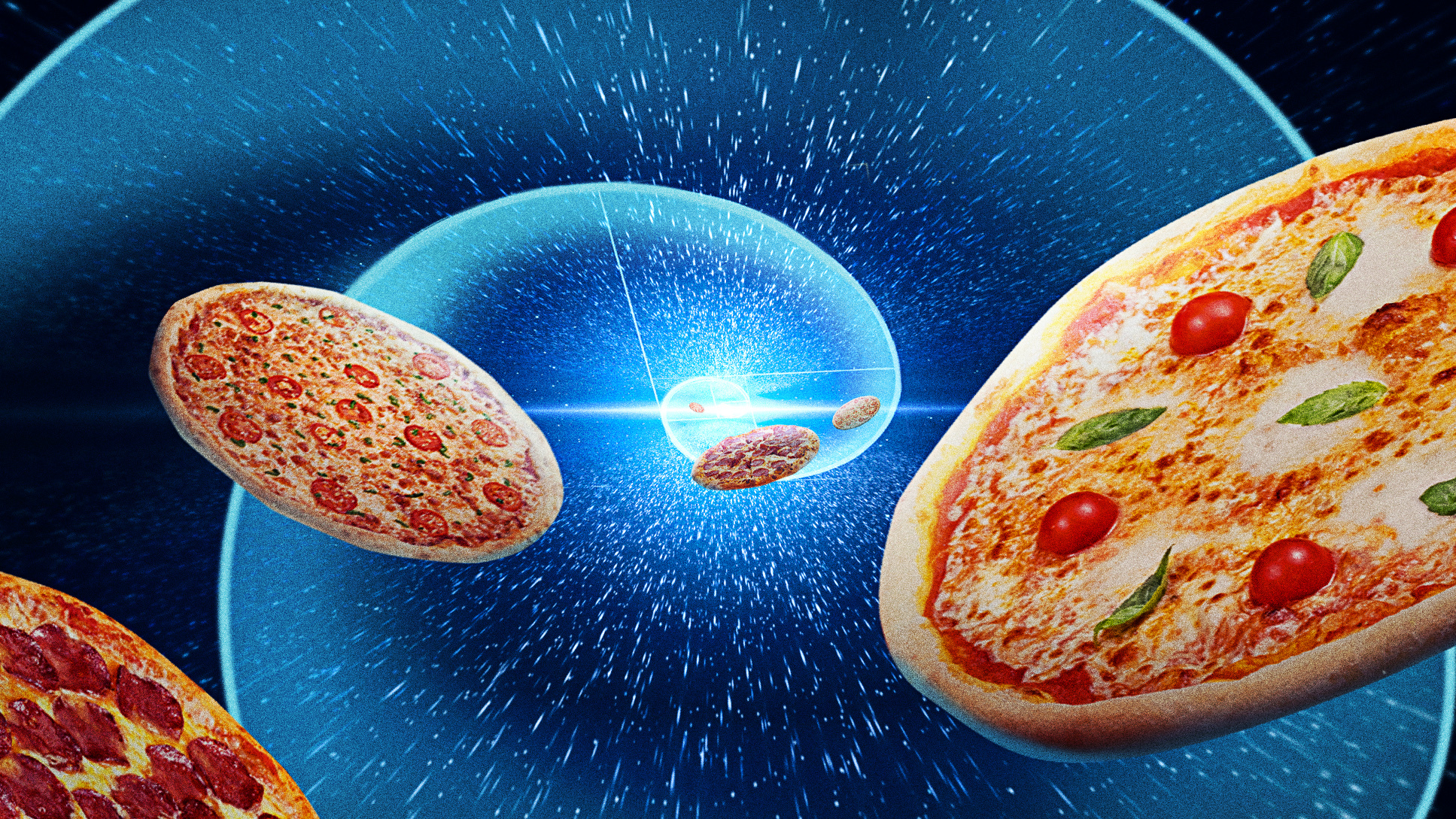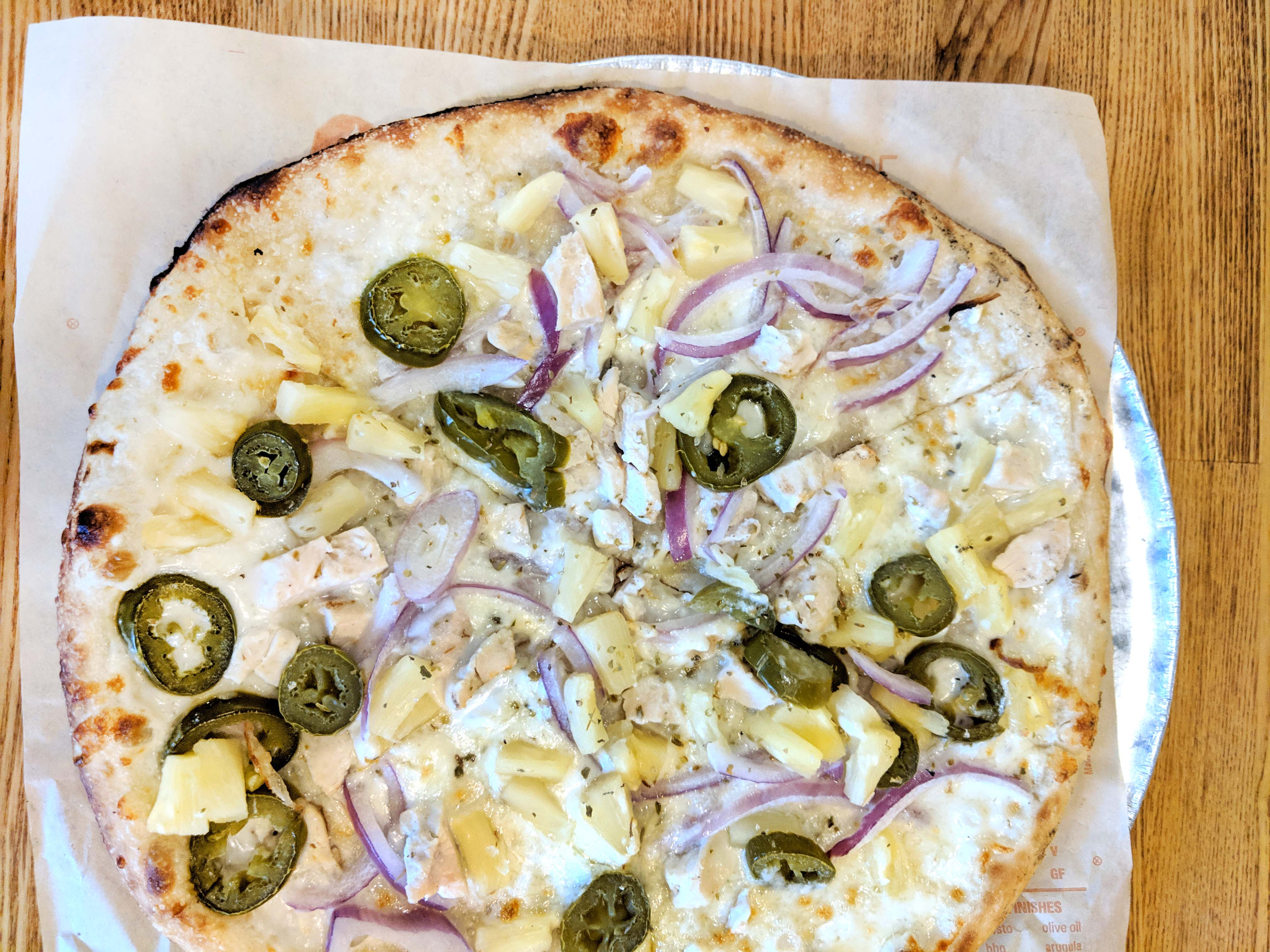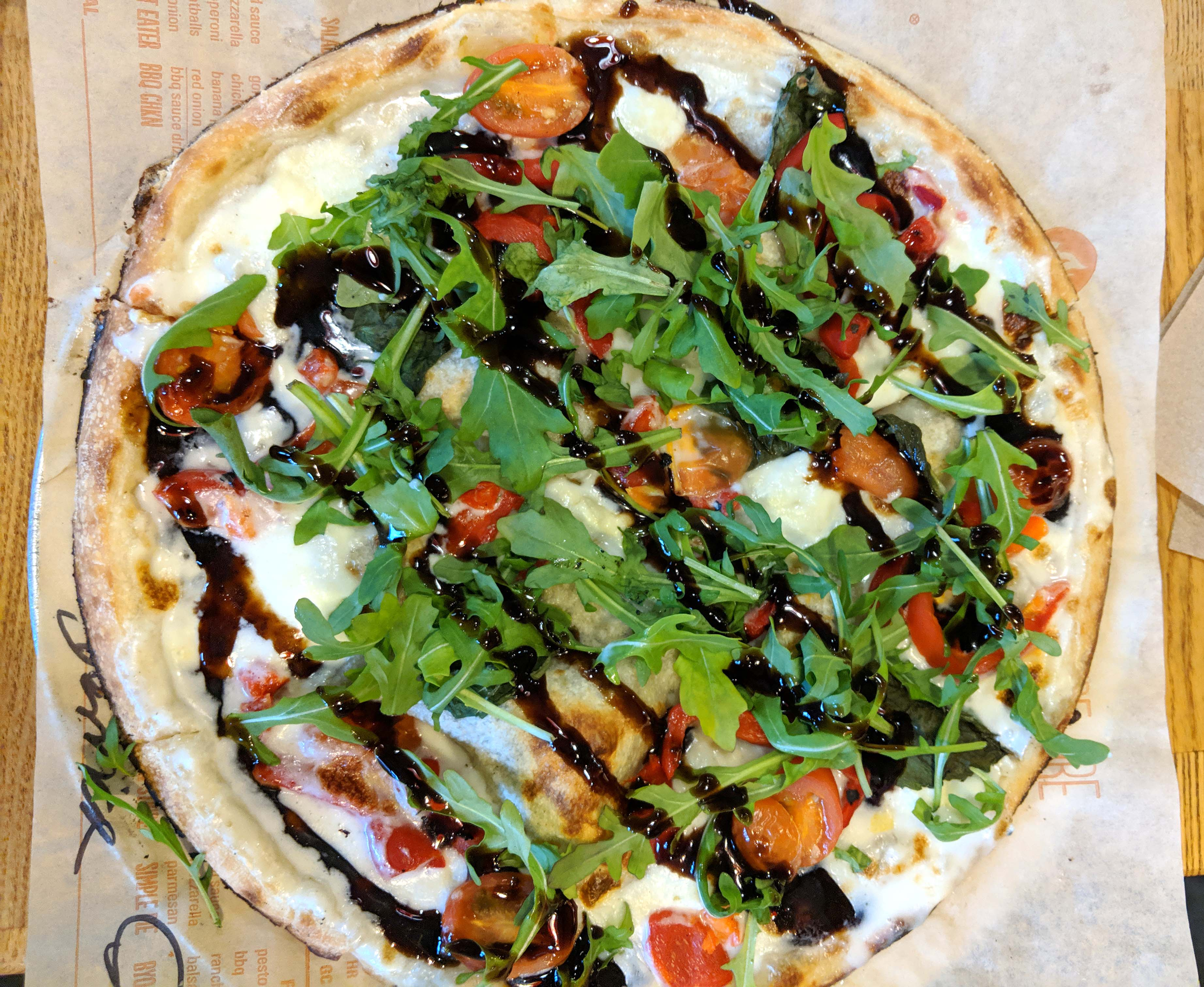A Pizzaiolo Explains His 4 Rules Of Pizza Toppings
The vast majority of us eat pizza, and we all have preferred toppings we stick to as strongly as we do to our favorite sports teams or beloved Sopranos episodes. Personally, I gravitate toward pepperoni and mushroom. No anchovies, please.
But, am I just a creature of pizza habit, stuck in the mud after too many late-night deliveries and Friday-night specials? Sure, people like what they like, but what if I was missing out on my perfect pizza? I needed a pizza sommelier, basically, but who could I turn to?
Fortunately, Derrick Tung, owner/pizza maker at Paulie Gee's in Chicago, stepped up. Paulie Gee's stands out from the Chicago landscape with its exceptional Detroit-style and thin-crust pies, baked in two pizza ovens shipped over from Italy. In April, Tung heads to the World Pizza Championships in Italy with his Detroit-inspired, gluten-free pan pizza topped with mozzarella, sharp white cheddar edge, two layers of pepperoni cups (under and over the cheese), housemade bacon jam, post-oven ricotta, and hot honey.
In the midst of preparing, Tung agreed to meet me at a Blaze Pizza location in Chicago to order a mess of pizzas and discuss what goes in to selecting the greatest possible pizza combo.
Blaze Pizza is a nationwide chain that offers a wide variety of toppings and sauces, including cheeses from ricotta to feta; all kinds of meats like bacon, ham, and meatballs; veggies roasted, caramelized, and otherwise; and even glazes and finishes like balsamic and barbecue.
My goal for inviting Tung was simple. At a make-your-own-pizza joint like Blaze Pizza, where you can essentially request any number of toppings and sauces, what's the best pizza practice for customizing a pie that's not just an overload? What are the issues of flavor and balance we must consider?

My afternoon with Tung began with him ordering four pizzas:
- Sausage, mushroom, shredded mozzarella and parmesan, and red onion in a spicy red sauce
- Chicken, jalapeño, red onion, pineapple, and mozzarella
- A decadently rich white sauce with bacon, roasted garlic, and caramelized onion
- What we jokingly referred to as our "New Year's" healthy pizza, with arugula, cherry tomatoes, basil, and red pepper, plus a balsamic glaze.
As we ate, Tung explained the key elements to pizza topping selection. He adheres to four basic rules.

1. Keep it to two or three ingredients
What's the biggest mistake people make when they get toppings on pizza? "They get too many," Tung said. At Blaze, there's an option where you can pile on as many ingredients as you like for one price—tempting. And at other pizzerias, you'll pay more per topping, which can swiftly add up. Even if it's tempting to pile on the meats or cheeses, Tung says it makes the pizza "so heavy, with so many ingredients that it just falls apart."
A better ratio is to just get two or three ingredients that play well together, and then, as Tung describes, they'll "shine while you're eating it." The more ingredients you have, the more different flavors and texture, so the more muddled the overall effect is going to be. You just have to make sure that you have the proper balance of ingredients.
2. Ideal combo: Fat + acid + texture
One constant I noticed on every pie Tung ordered is something rich and savory alongside something crunchy. I pointed out that he definitely seemed to be an onion fan. "Onions bring a nice flavor," Tung said. "A little bit of spice, but not overly spicy. When you roast them, there's so much flavor." The red onion offered an attractive crunchiness while the roasted added sweet and savory elements.
Tung and I seem to have the same go-to pizza, as his fave sounded a lot like the house classics I usually order: sausage, mushroom, diced white onions. The trio checks a number of boxes: "That's kind of what we think about when we make our pizzas: how many contrasts of flavor, how many contrasts of textures can we get, what do we have fat-wise, and what acid to cut the fat with."
A red tomato sauce typically supplies the acid. But Tung pointed to our veggie pizza, which had a lot more acid with the cherry tomatoes and the balsamic. Then he gestured toward pizza number two, where "we have the jalapeños, and those will be acidic to cut through as well. I don't know why, I loved it as a kid. Chicken, pineapple, and jalapeño just became one of those pies I would get as a kid from Pizza Hut all the time."
Just make sure to balance acid with a fat—such as a creamy white sauce or a meat-based topping—for that ideal pizza topping equation. Of course, the fat level varies with your meat selection. Bacon brings a lot of flavor bang-for-your-buck, whereas "sausage brings some fat but it's not a ton," especially at Blaze where they pre-cook the sausage and drain the oil. Tung prefers the old-school Chicago tavern-style pie where the pizza is loaded with raw bulk sausage, baked right into the pizza.
The proper texture comes not only from crunchy toppings like green pepper and onions, but a properly made crust. Or in the case of our bacon-sauce pizza, the onions provided most of the crispy texture. Tung admitted that this one didn't have "a ton that's texturally interesting but there's just enough there to let you know that you have lots of flavor. Bacon and garlic is a great pairing."
I wondered about the importance of texture, then, on something protein-overloaded like Pizza Hut's Meat Lover pizza. Don't you need some extra texture there? Derrick laughed. "If you go in getting a Meat Lover's Pizza, you kind of know what your'e expecting," he said, "I think the green pepper and onion would be like, what are you doing here on my pizza?"
3. Pair sweet and savory
Tung was ahead of the times with that chicken, pineapple, and jalapeño pizza from Pizza Hut. "Yeah, it was a thing before it was a thing, I guess," he said. "I love a barbecue chicken pie, but something as simple as the sweetness of the pineapple with the spiciness of the jalapeño, will really balance out the chewy chicken." At Paulie Gee's, he offers a pickled pineapple and prosciutto for a take on the traditional ham-and-pineapple pizza.
Unfortunately, the Blaze combo was not the pizza that was going to make me a pineapple-on-pizza fan. Even the jalapeños tasted flat. Derrick conceded that his nostalgic selection was "a little disappointing," but hey, three out of four is a great batting average in my book.
A better, similar flavor pairing could be found in that arugula-balsamic blend, which boasted, "butteriness from the greens, sweetness from the balsamic to balance it, some texture and sweetness from the tomatoes, and all of that is cutting in to the fat of the sauce." It was probably my favorite, and I'm not even usually a huge fan of veggie pizza.
4. Don’t forget color
Another thing that made that balsamic pizza such a winner is that it was really, really attractive—and not just for Instagram. The chicken-jalapeño-pineapple looked downright sad next to it. Tung admits that as a restaurant owner, he's more concerned with aesthetics than the at-home chef: "If it's your family and they don't care what it looks like and they're going to eat it anyway, then it doesn't matter too much. But for us [at the restaurant], if there's a sea of red, we need to change it up. How do we make it more palatable from the visual perspective?" He shook his head at the chicken pizza: "If we eat with our eyes, this is a loser from the start."
Tung then concluded his crash-course on topping pizzas with a final lesson: "You need a balance. At the restaurant, we're always thinking about what are we actually trying to get the guest to feel or taste? That probably sounds pretentious."
Not at all, in fact. He makes it look easy, but it's worth the time to consider your toppings carefully whether at a takeout pizza parlor or at home. And even if those toppings are unlimited, remember you can have too much of a good thing.


